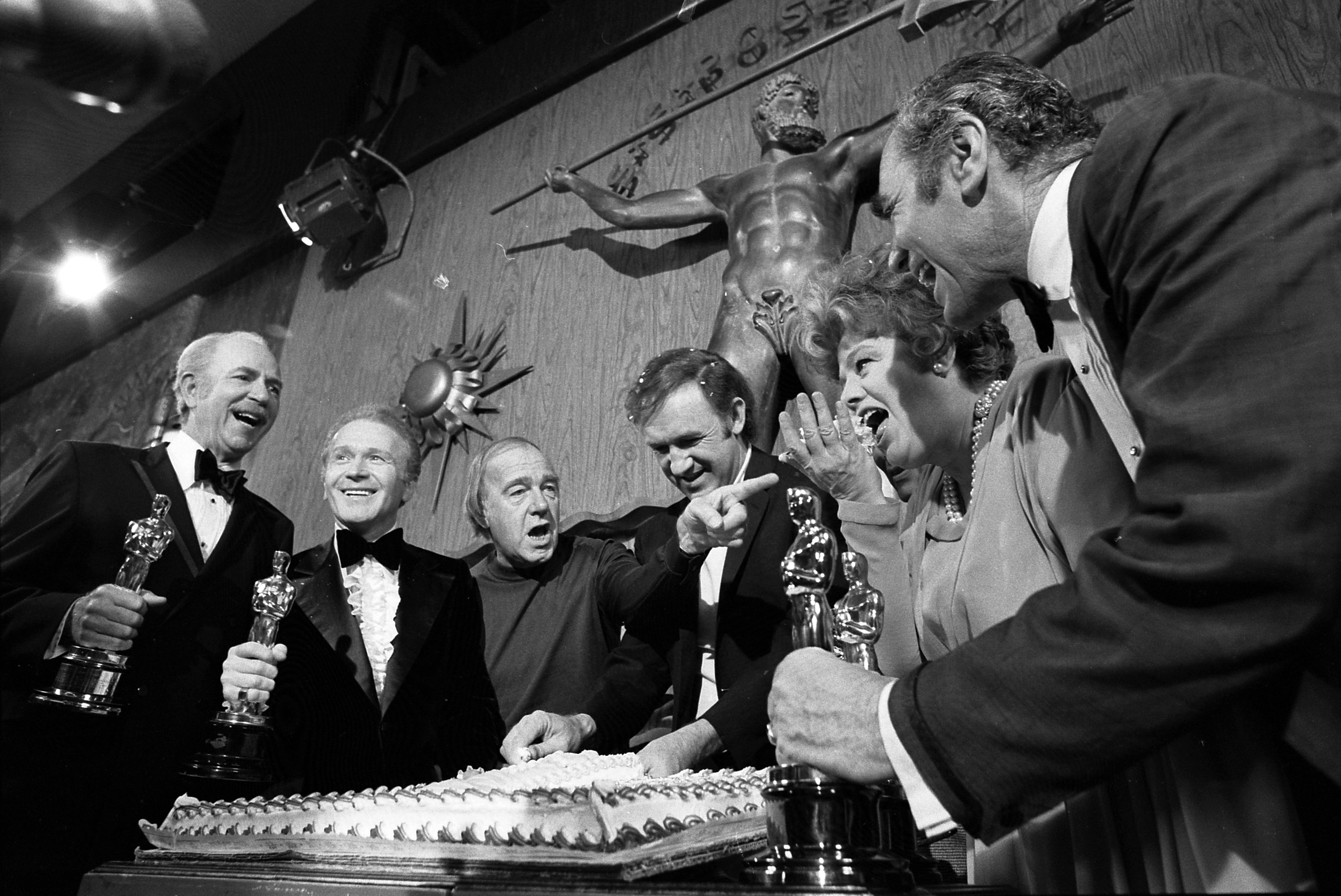
Gene Hackman, the prolific Oscar-winning actor whose studied portraits ranged from reluctant heroes to conniving villains and made him one of the industry’s most respected and honored performers, has died at 95. Found dead at his home in Santa Fe, New Mexico, alongside his wife, Betsy Arakawa, the circumstances of his passing have cast a somber coda on a life that spanned nine decades and left an indelible mark on cinematic history.
Authorities revealed that Mr. Hackman died of heart disease, with complications from Alzheimer’s disease, a week after his wife, Betsy Arakawa, succumbed to hantavirus pulmonary syndrome. His pacemaker indicated an abnormal heart rhythm on February 18, the day he likely died, while his wife’s last known outing was on February 11. The deeply affecting details of their deaths, occurring in their shared Santa Fe home, underscore a life of profound intensity, both on screen and in his deeply private later years.
From his raw, unvarnished portrayals to his quiet disdain for Hollywood’s social circuit, Mr. Hackman embodied an ethos of doing his job with exceptional skill, letting his work speak for itself. He was an actor’s actor, a curmudgeon and a reluctant celebrity, yet his characters, whether a hard-nosed cop or a corrupt sheriff, resonated with a believable authenticity that transcended genre. This article delves into the remarkable journey of a man who became Hollywood’s consummate everyman, tracing his path from a turbulent childhood to a cinematic icon.
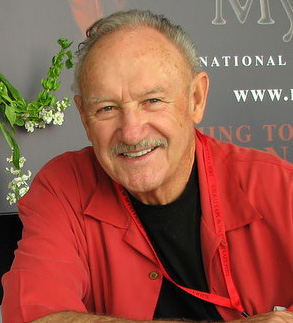
1. **Early Life and Formative Years: A Crucible of Experience**Eugene Allen Hackman’s early life was marked by considerable hardship and a yearning for escape. Born in San Bernardino, California, he spent his formative years in Danville, Illinois, where his father worked as a pressman. The household was a place of conflict, with his parents fighting repeatedly and his father often resorting to physical discipline against young Gene, a painful experience that would leave lasting scars.
At the tender age of 13, a pivotal moment of abandonment occurred when his father waved goodbye and drove off, never to return. This departure, simple yet devastating, profoundly affected Mr. Hackman, leaving him with an emotional chasm that, as he later reflected, became a wellspring for his acting. His mother, meanwhile, grappled with alcoholism and was frequently at odds with her own mother, with whom the fractured family lived, including Gene’s younger brother, Richard.
By 16, Hackman felt an urgent “itch to get out.” Lying about his age, he enlisted in the U.S. Marines. His service was characterized by brawling and a resistance to authority, leading to his demotion from corporal three times. Yet, it was during this period that he discovered a nascent interest in performance, conquering his “mic fright” to become a disc jockey and news announcer on his unit’s radio station, an early hint of the powerful voice and presence that would later define his acting career.
Read more about: Pixels and Power: A Nostalgic Dive into 14 Iconic ’80s Computer Brands That Shaped the Digital Revolution
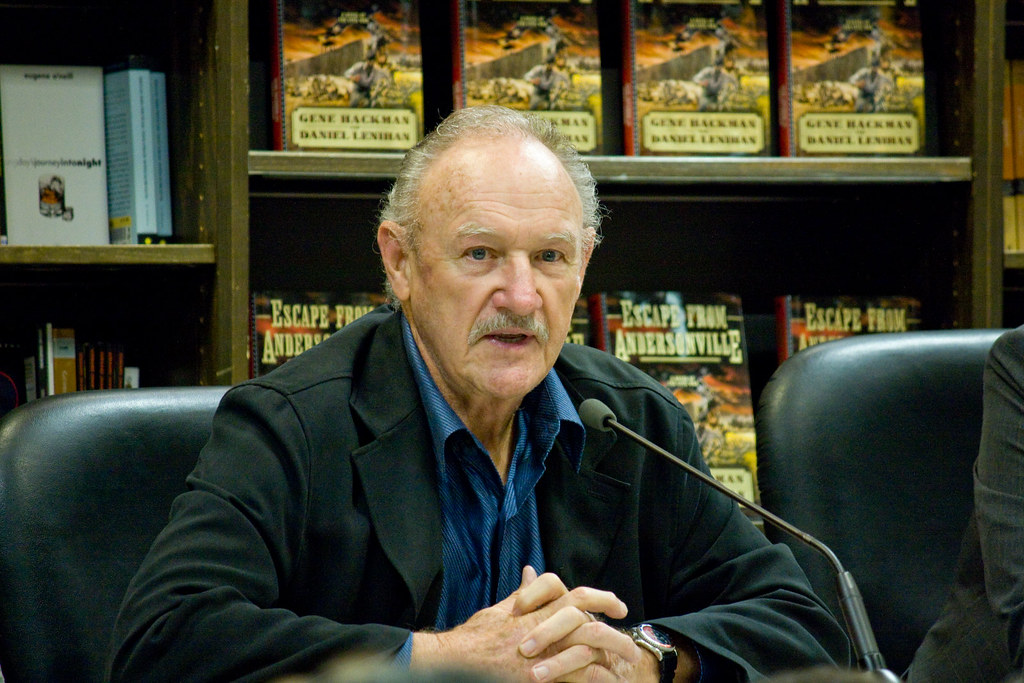
2. **The Road to Acting: From Humble Beginnings to Artistic Pursuit**Upon earning a high school degree during his time in the Marines, Mr. Hackman initially pursued journalism at the University of Illinois but dropped out after only six months. His nomadic career path then led him to New York to study radio announcing, followed by stints working at radio stations in Florida and his hometown of Danville. Seeking further artistic expression, he returned to New York to study painting at the Art Students League, a brief detour before finding his true calling.
His decisive pivot to acting came when he enrolled in a course at the prestigious Pasadena Playhouse. It was here that he met a kindred spirit in a young Dustin Hoffman, though both found themselves to be outsiders. Ironically, both Hackman and Hoffman were eventually “kicked out for lack of acting talent,” a judgment that history would spectacularly refute. Undeterred, they moved to New York, joining other aspiring actors like Robert Duvall, enduring a period of struggle and hardship.
During these lean years in New York, Mr. Hackman took on a variety of jobs, working as a doorman and a truck driver among others, all while relentlessly pursuing acting breaks. Summer work at a theater on Long Island led to roles off-Broadway, where his talent began to garner attention. He soon received good notices in Broadway productions such as “Any Wednesday,” where he co-starred with Sandy Dennis, and “Poor Richard,” alongside Alan Bates, signaling his burgeoning presence in the theater world.
Read more about: Hollywood’s Leading Ladies: 14 Iconic Women Who Shaped the Entertainment Industry
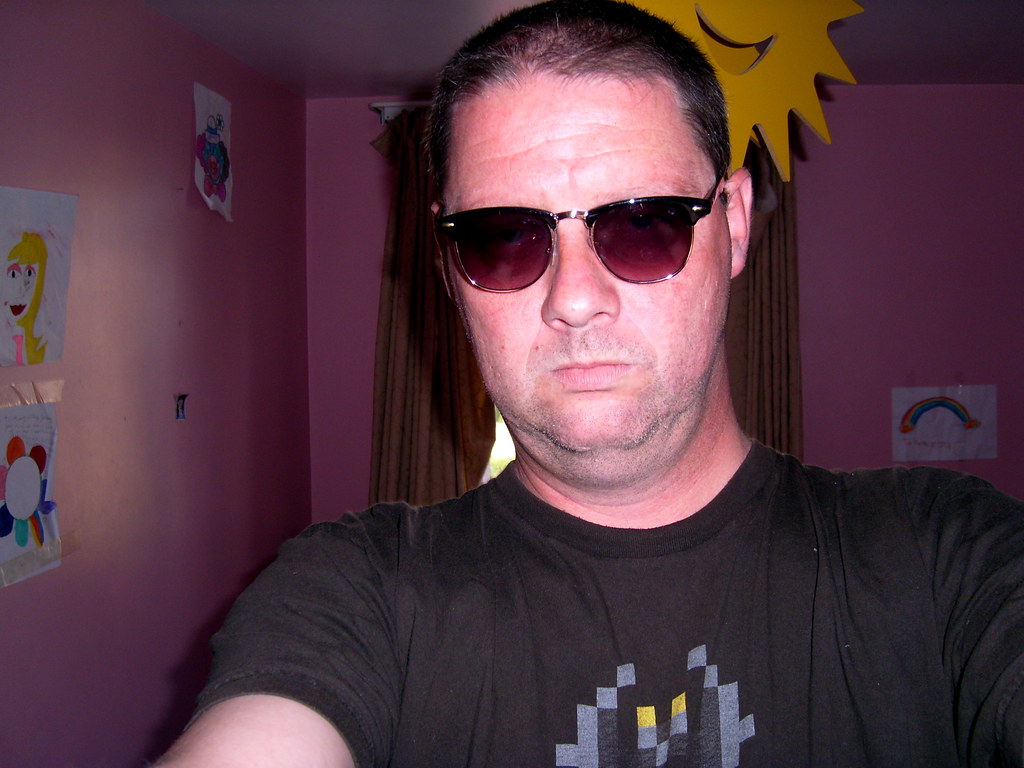
3. **Breakout with “Bonnie and Clyde”: A Star’s Incipient Glow**Mr. Hackman’s entry into film began with small roles, including a brief but impactful appearance in “Lilith” (1964), a film that starred Warren Beatty and Jean Seberg. It was director Robert Rossen who hired him for that part, and the impression he made on Beatty would prove crucial in a few short years, fundamentally altering the trajectory of his career and paving the way for his breakout performance.
That opportunity arrived in 1967 with “Bonnie and Clyde.” Warren Beatty, who produced and starred in the film, remembered Hackman from “Lilith” and personally cast him as Buck Barrow, the explosive and outgoing brother of Clyde Barrow. This role would become his first major cinematic breakthrough, capturing the attention of both critics and audiences alike. The film was a cultural phenomenon, redefining the gangster genre and propelling its cast to new heights of recognition.
His performance as Buck Barrow earned him his first Academy Award nomination for Best Supporting Actor. Esteemed critic Pauline Kael of The New Yorker lauded his work as “a beautifully controlled performance, the best in the film,” a testament to his ability to bring depth and nuance even to a supporting character. This critical acclaim firmly established Hackman as a formidable talent, setting the stage for an extraordinary career that would soon see him become one of Hollywood’s most versatile and respected actors.
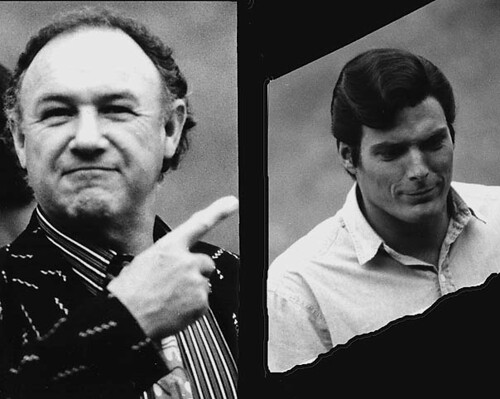
4. **Achieving Stardom with “The French Connection”: The Gritty Birth of an Icon**Four years after his initial Oscar nomination, Gene Hackman achieved true stardom and won his first Academy Award for Best Actor for his visceral portrayal of Detective Jimmy “Popeye” Doyle in the 1971 thriller “The French Connection.” This role solidified his image as a hard-nosed, rules-bending New York City cop, instantly making him a cinematic icon. The role was coveted, with Jackie Gleason, Steve McQueen, and Peter Boyle among those considered, but it was Hackman who ultimately defined the character.
Initially, Mr. Hackman harbored fears he was miscast, believing himself to lack the flamboyant personality the role seemed to demand. To immerse himself in the character, he spent several weeks accompanying New York City police officers on nighttime patrols in Harlem, gaining invaluable insight into the gritty reality of police work. This dedication proved instrumental, allowing him to tap into the raw intensity required for Popeye Doyle, a character who embodied the edginess of 1970s masculinity.
The filming of “The French Connection” pushed boundaries, notably in a scene where Hackman was required to slap a suspect. Feeling he hadn’t achieved the necessary intensity, he requested a reshoot, which ultimately took 37 takes. The film’s most famous sequence, a dangerously realistic car chase beneath elevated subway tracks, showcased Hackman’s deep immersion in his “loose-cannon character,” as director William Friedkin recalled. The scene’s raw authenticity was so profound that it even involved an accidental collision with a real New York City resident who was unaware a movie was being filmed, a testament to the film’s immersive and daring production.
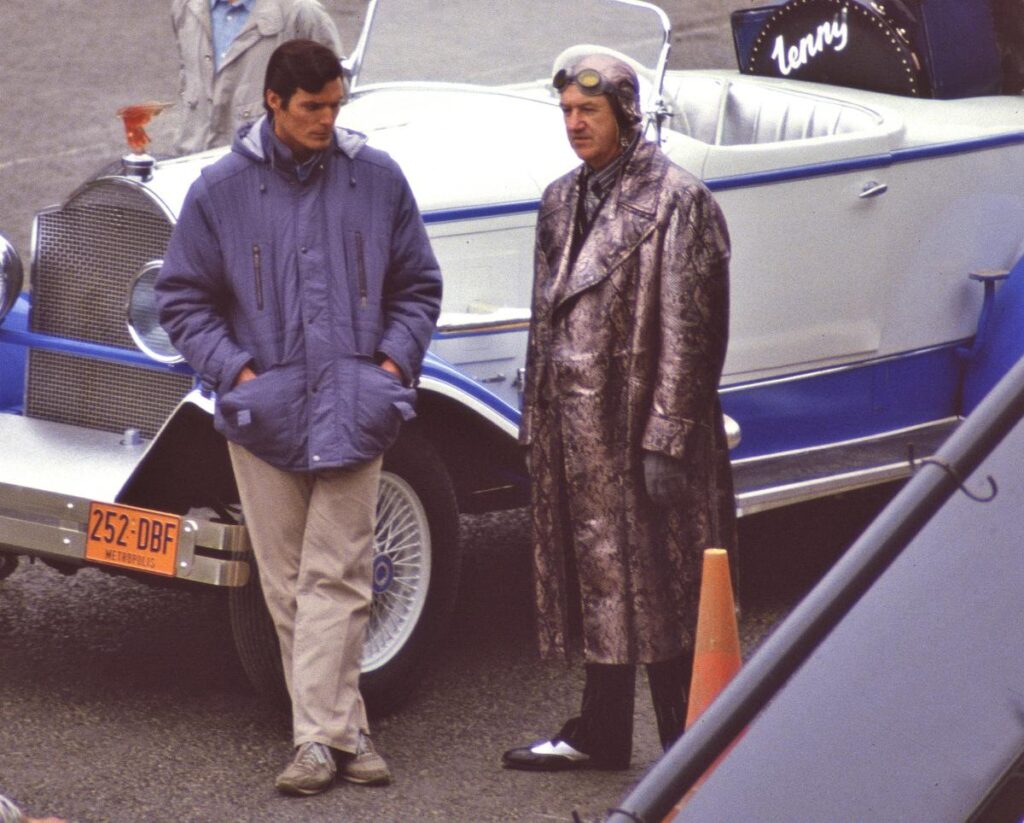
5. **Master of Complexity in the 1970s: Defining a Decade of Nuance**The 1970s proved to be a defining decade for Gene Hackman, as he delivered a string of critically acclaimed performances that showcased his extraordinary versatility and cemented his reputation as a master of complex characters. Following the success of “The French Connection,” he continued to delve into roles that explored the darker, more nuanced aspects of the human condition, often portraying men grappling with internal turmoil or external pressures in a rapidly changing world.
Among these standout performances was his role as a brawling ex-con in “Scarecrow” (1973), a film that he personally regarded as the best performance of his entire career. His portrayal was lauded for its raw emotional depth and realism. Another notable achievement came in Francis Ford Coppola’s taut, understated 1974 drama “The Conversation,” where he played Harry Caul, a secretive surveillance expert who becomes enmeshed in a potential murder plot. Hackman’s ability to convey Caul’s paranoia and moral conflict through subtle gestures and an internal intensity was widely praised, illustrating his capacity for understated power.
Further cementing his status as a leading actor of the era, Hackman appeared as a troubled private eye in “Night Moves” (1975), reuniting him with director Arthur Penn. These roles, alongside others like his turn as a minister trying to survive a capsized ocean liner in “The Poseidon Adventure” (1972), demonstrated his unparalleled ability to inhabit a diverse range of characters. He seemed capable of any kind of role, from a reluctant hero to a man riddled with doubt, making him one of the most respected and sought-after performers of his generation.
Read more about: Beyond Bell Bottoms and Brady: 14 ’70s TV Hits You Totally Forgot Existed (But Seriously Shaped Everything)
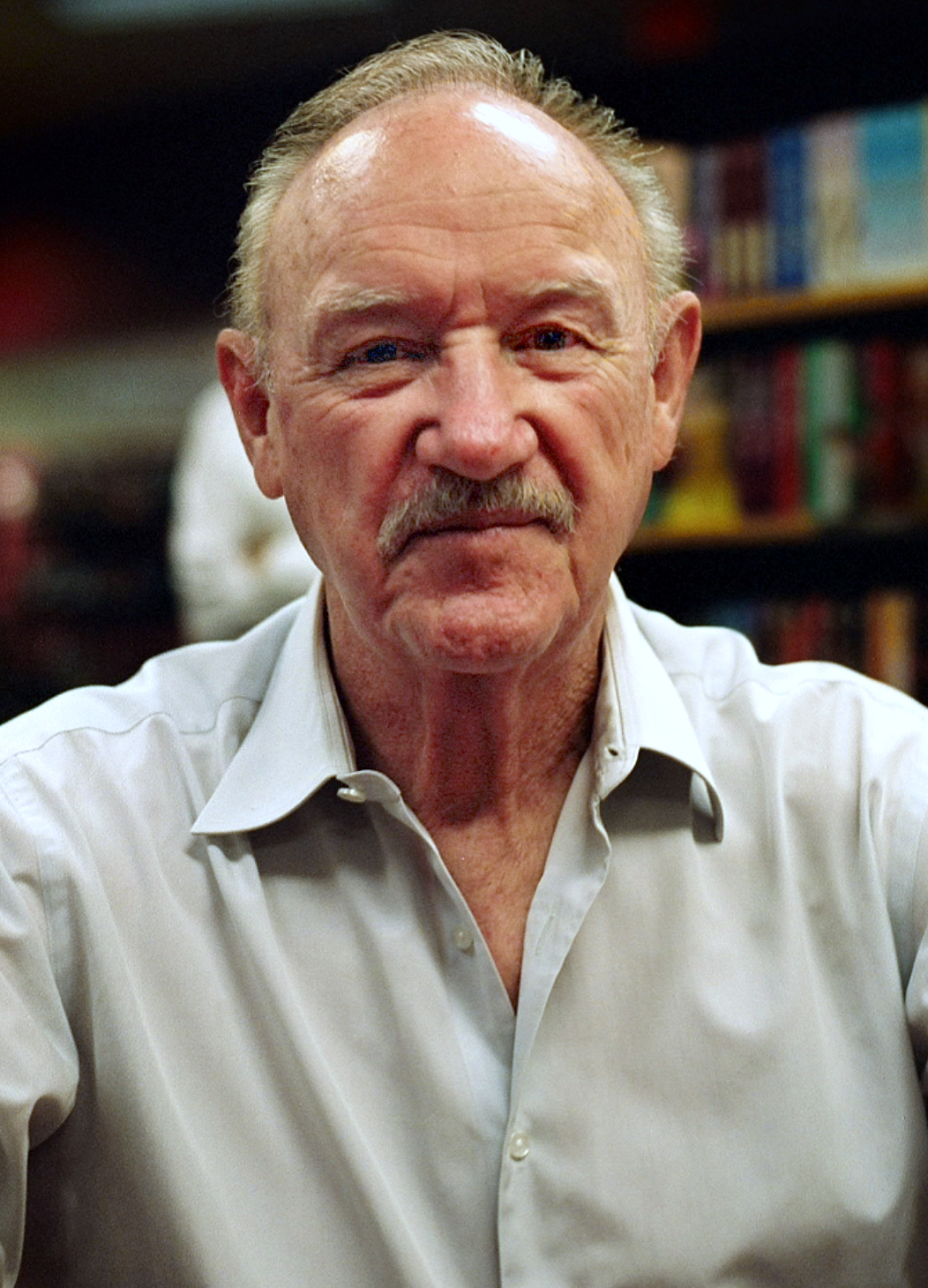
6. **The Unexpected Turn to Comedy: Unveiling a Lighter Side**While Gene Hackman became renowned for his intense, dramatic portrayals and his ability to embody gruff, complex masculinity, he also possessed a remarkable, often surprising, knack for comedy that he honed on the stage early in his career. This comedic timing and presence resurfaced in several memorable film roles, adding another dimension to his already diverse repertoire and proving his capability across a full spectrum of emotions and genres.
One of his most beloved comedic turns came in Mel Brooks’s 1974 classic, “Young Frankenstein.” In a standout cameo, Hackman played a blind hermit who unknowingly offers hospitality to the monster. His performance, filled with physical comedy and perfectly delivered lines, provided moments of genuine hilarity and warmth, demonstrating his comfort in a lighter, more farcical setting. This role allowed audiences to see a different, more whimsical side of an actor known for his dramatic gravitas.
Later in his career, Mr. Hackman continued to showcase his comedic chops in films such as “The Birdcage” (1996), a vibrant remake of the French comedy “La Cage aux Folles.” Here, he played Senator Kevin Keeley, a pompous conservative politician whose daughter’s fiancé turns out to have two gay men as parents. His portrayal of a man struggling to maintain his rigid facade in increasingly absurd situations was both funny and nuanced, further cementing his reputation as an actor who could effortlessly navigate both the profound and the hilarious aspects of human nature.
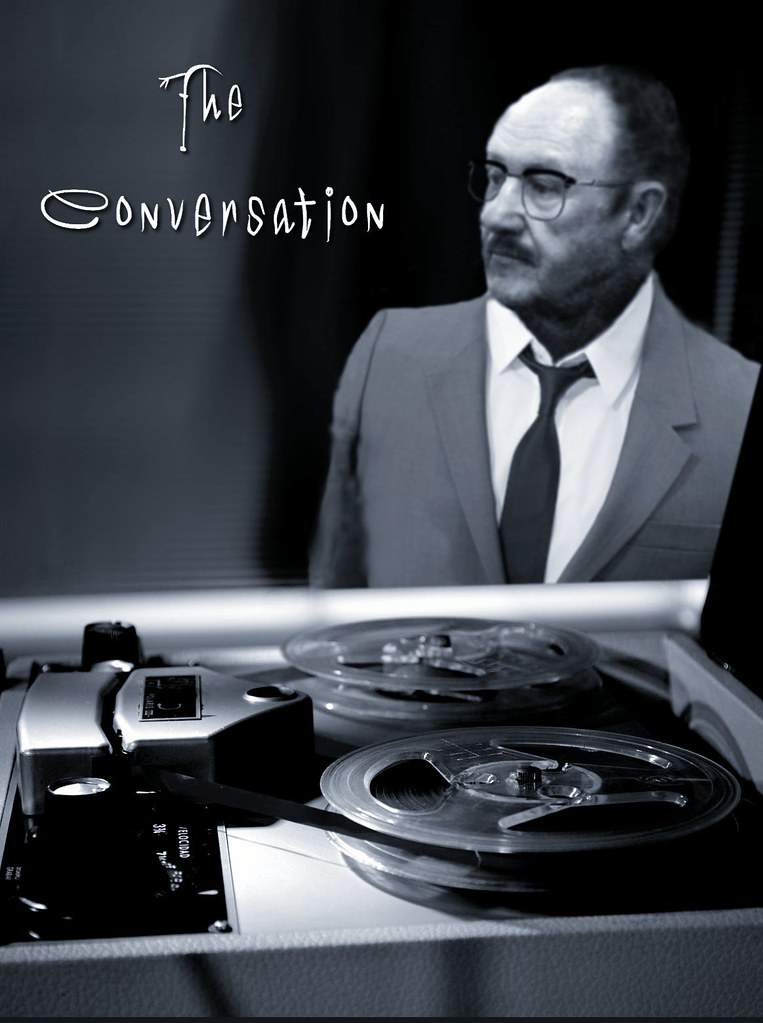
7. **Triumphant Return and Second Oscar: The Unflinching Gaze of “Unforgiven”**Gene Hackman’s career, already studded with critical acclaim, reached another zenith with his powerful, Oscar-winning performance in Clint Eastwood’s 1992 Western, “Unforgiven.” This role, portraying the corrupt and sadistic town boss Little Bill Daggett, marked a significant departure, presenting a character of chilling brutality that transcended typical villainous archetypes. It was a testament to Hackman’s depth that he initially resisted the role, signaling his discerning approach to his craft.
His hesitation stemmed from a personal reluctance to engage with overly violent characters, a sentiment shared by many actors who prioritize the moral landscape of their work. However, Clint Eastwood, who both directed and starred in the film, personally persuaded Hackman to take on the part. Eastwood convinced him that “Unforgiven” was not a celebration of violence but rather a profound critique of it, offering a nuanced perspective on the genre that Hackman had explored earlier in his career.
Hackman’s portrayal of Little Bill Daggett was nothing short of masterful, capturing the chilling essence of a man who wielded power with cruel indifference. His ability to evoke genuine fear and revulsion, notably in scenes with Morgan Freeman’s character, was widely lauded. Freeman himself later remarked that the terror on his face during their scenes together was not faked, underscoring the raw intensity Hackman brought to the screen.
This nuanced yet unflinching performance earned Hackman his second Academy Award, this time for Best Supporting Actor. During his American Film Institute interview, Hackman graciously acknowledged Eastwood’s role in his decision, stating, “To his credit, and my joy, he talked me into it.” The award solidified his legacy as an actor capable of delivering compelling performances across a vast spectrum of human experience, even when challenging his own comfort zone.
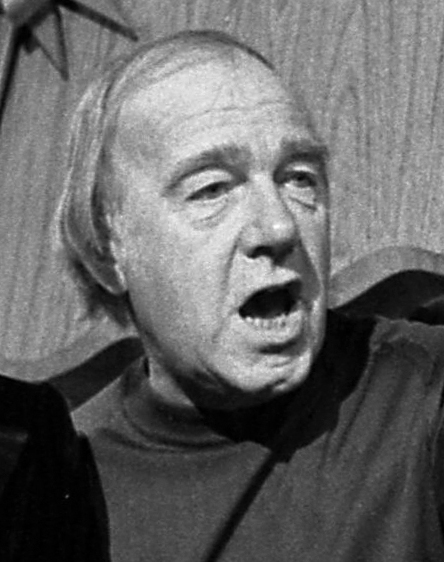
8. **The Enduring ‘Everyman’ Image: Crafting Authenticity in Hollywood**Throughout his extensive career, Gene Hackman cultivated an enduring ‘Everyman’ image, a persona that resonated deeply with audiences and critics alike. He often seemed to defy the conventional mold of a Hollywood star, opting instead for a self-effacing and unfashionable presence that prioritized his work over celebrity. This distinctive approach allowed him to inhabit a diverse array of characters with a believable authenticity that few could match.
Hackman was frequently characterized as an “actor’s actor,” a curmudgeon, and a reluctant celebrity. He embodied an ethos of simply “doing his job” with exceptional skill, allowing his performances to speak for themselves rather than engaging in the industry’s social circuit. His disdain for the business side of show business was well-known, as he preferred to remain outside the glare of Hollywood’s relentless spotlight.
His physical presence also contributed to this relatable image; he was described as looking like “your everyday mine worker,” with strong but unremarkable features that were neither plain nor conventionally handsome. Standing tall at 6-foot-2, he possessed the unique gift of being able to “melt into a crowd” rather than overtly stand out. This allowed his characters to feel grounded, enabling him to peel back the layers from middle-aged individuals burdened by life’s experiences.
As Jeremy McCarter observed in Newsweek, Hackman’s ability to portray characters who had “experienced failure and loss, but not long enough to take it easy,” allowed him to infuse them with a distinctive mix of shadow and light. He made the moral gray zone his home, demonstrating that in his performances, as in life, “the good guys aren’t always nice guys, and the villains have charm,” a testament to his profound understanding of human complexity.
Janet Maslin of The New York Times aptly summarized his unique impact, stating, “There’s no identifiable quality that makes Mr. Hackman stand out. He simply makes himself outstandingly vital and real.” This commitment to authenticity, coupled with his avoidance of self-analysis in interviews—fearing that “if you look at something too closely, it goes away”—underscored his instinctive and deeply felt approach to acting, making him a truly unique figure in cinema.

9. **Prolific Output in Later Years: From Iconic Villains to Beloved Patriarchs**Even as he matured, Gene Hackman maintained an astonishingly prolific output, defying the typical slowdown that often accompanies advanced age in Hollywood. His commitment to his craft remained unwavering, allowing him to deliver a continuous stream of memorable performances well into his later years. This unwavering dedication ensured his presence on screen remained impactful and consistent.
His versatility shone brightly in this period, as he seamlessly transitioned between intense dramatic roles and captivating comedic turns. He reprised his iconic role as the villainous Lex Luthor in “Superman” (1978) and its sequel, “Superman II,” filmed simultaneously, showcasing his capacity for charismatic malevolence. Later, he earned widespread affection as the inspirational basketball coach in the sentimental favorite “Hoosiers” (1986), a role that resonated deeply with audiences.
One of his most acclaimed later roles was as the titular character in Wes Anderson’s 2001 film, “The Royal Tenenbaums.” The part of Royal Tenenbaum was famously written with Hackman specifically in mind, a testament to his unique ability to embody complex, flawed, yet ultimately endearing figures. Director Wes Anderson spent months convincing Hackman to take the role, underscoring the high regard in which he was held by a new generation of filmmakers.
Hackman’s presence on set, even in his later career, could be formidable. Luke Wilson, who played his adopted son in “The Royal Tenenbaums,” recounted an instance where Hackman’s piercing gaze spurred him to nail a scene, highlighting the veteran actor’s magnetic and often intimidating influence. This ability to command a scene, even with a single glance, was a hallmark of his sustained power as a performer.
Indeed, the year 2001 alone saw Hackman appear in five films, including the comedic “Heartbreakers,” David Mamet’s heist drama “Heist,” the action-packed “Behind Enemy Lines,” and the darkly humorous “The Mexican.” This incredible volume of work, often across diverse genres, underscored his enduring appeal and his remarkable work ethic, proving that even after turning 70, he remained one of Hollywood’s busiest and most sought-after Oscar winners.
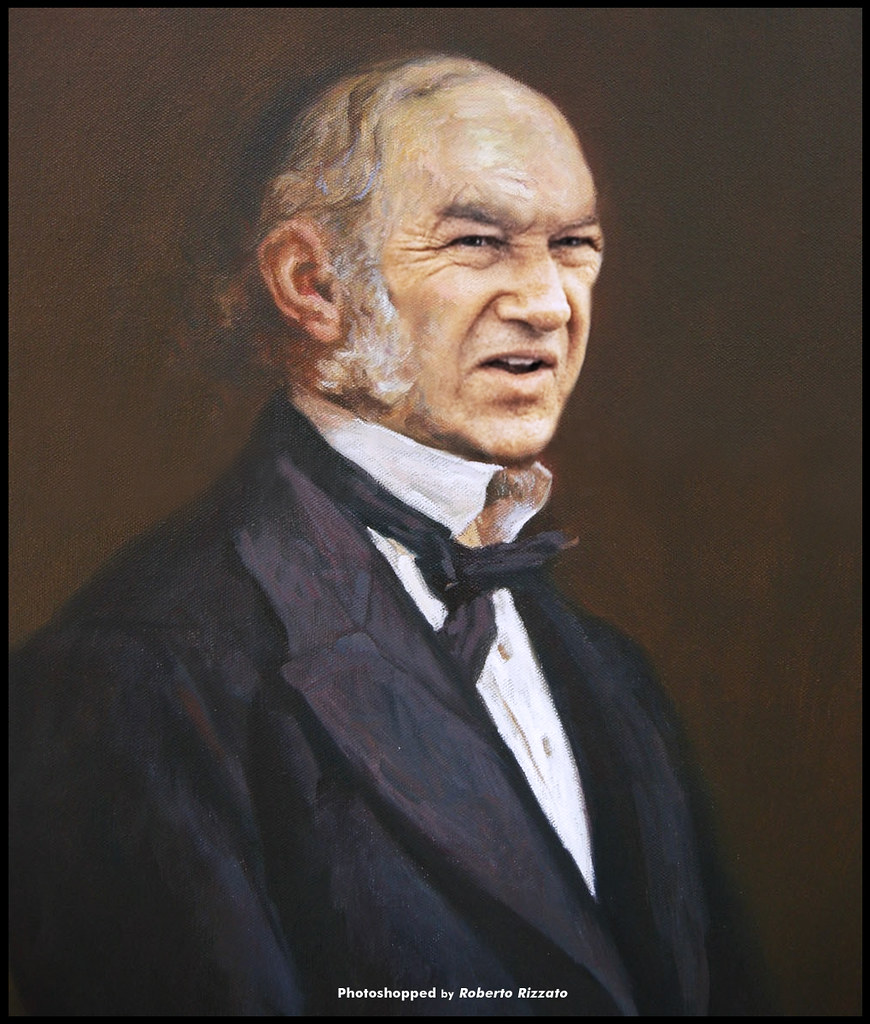
10. **The Enigmatic Retirement: A Gradual Retreat from the Spotlight**Gene Hackman’s relationship with acting was a complex one, characterized by a pattern of brief retirements followed by triumphant returns, until a more definitive withdrawal in his mid-70s. This enigmatic nature of his departure from Hollywood puzzled many, as an actor of his caliber and passion seemed destined to remain on screen indefinitely. His career, marked by its intensity, eventually gave way to a quieter chapter.
By 2004, following the release of what would be his final feature film, the comedy “Welcome to Mooseport,” Hackman began to openly discuss his retirement. He informed Larry King that he had “no projects lined up,” a clear signal of his intentions to step away. While he had flirted with retirement multiple times throughout his career, often citing the demanding nature of the film industry, this time felt different, more resolute.
His final credit in recent years was limited to narrating a Smithsonian Channel documentary, “The Unknown Flag Raiser of Iwo Jima,” a role that allowed him to use his distinctive voice without the full immersion required for on-screen acting. This choice underscored his desire to maintain a connection to storytelling, albeit in a less visible capacity, reflecting a thoughtful transition from his intense cinematic career.
Hackman himself offered insights into the seductive yet demanding nature of his profession during a 1999 interview on WHYY’s Fresh Air. He remarked, “If you’ve done it as long as I have, it’s very hard to drop it. You know, there’s something very seductive about acting. You know, you come to work, and there’s 90 people standing there waiting for you to do something.” Yet, he also acknowledged a certain “unattractive” aspect to that dynamic, suggesting a weariness with the relentless demands of celebrity.
His decision to retire, while surprising to some, was ultimately consistent with his lifelong preference for privacy over the public gaze. It marked the end of a remarkable acting career rooted, as he once reflected, in a poignant moment of abandonment from his childhood. His understated gesture of a slight wave, a lifetime later, mirrored his capacity to convey profound emotion with minimal expression, a hallmark of his acting and perhaps his departure.
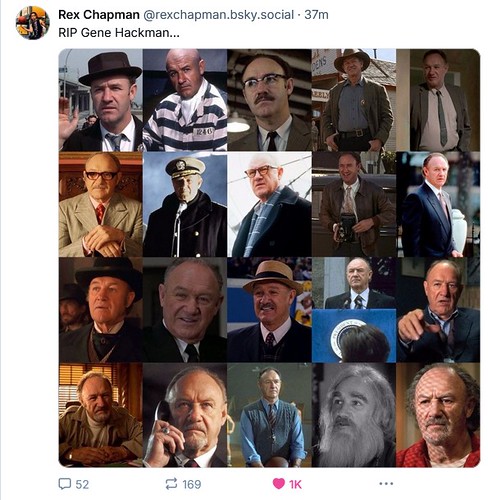
11. **The Poignant Coda: Unraveling the Circumstances of a Double Tragedy**The lives of Gene Hackman and his wife, Betsy Arakawa, concluded with a deeply poignant and mysterious chapter, the circumstances of their deaths unraveling only after their discovery on February 26. Found at their shared Santa Fe home, the details that emerged painted a somber picture of isolated struggle and the quiet end to two lives lived largely out of the public eye. The circumstances of their passing cast a profound coda on a life that spanned nine decades and left an indelible mark on cinematic history.
Forensic experts later reached a heartrending conclusion, determining that Mr. Hackman, aged 95, died of heart disease with complications from Alzheimer’s disease. This occurred approximately a week after his wife, Betsy Arakawa, 65, succumbed to hantavirus pulmonary syndrome, a rare but potentially fatal rodent-borne illness. The sequence of their deaths suggests an unimaginable week of deteriorating circumstances within their home, highlighting a tragic isolation.
Authorities indicated that Hackman, who was in the advanced stages of Alzheimer’s, was likely unaware of his wife’s death. This heartbreaking detail underscores the severity of his condition, preventing him from comprehending the tragedy unfolding around him or seeking help. His pacemaker indicated an abnormal heart rhythm on February 18, the day he likely died, while his wife’s last known outing was on February 11, stopping communication that same day.
The bodies, discovered by maintenance and security workers on February 26, were found decomposing with some mummification, a consequence of body type and Santa Fe’s especially dry, high-altitude climate. Hackman was found in the home’s entryway, and Arakawa in a bathroom. Even one of their three dogs, a kelpie mix named Zinna, was found dead in a crate near Arakawa, while two other dogs survived, further emphasizing the tragic scope of the events.
Chief medical investigator Dr. Heather Jarrell concluded, “He was in a very poor state of health. He had significant heart disease, and I think ultimately that’s what resulted in his death.” The revelations about the manner of their deaths jolted Santa Fe, a city known as a refuge for celebrities. Stuart Ashman, a local gallery co-owner, expressed widespread grief: “All of us that knew him should have been checking on him. I had no idea. … It’s just really sad. And that she died a week before him. My God.” The sheriff considers this an open investigation until final results, including a dog’s necropsy, are received. The profound intensity of Hackman’s onscreen life found its quiet, deeply private, and ultimately sorrowful conclusion off-screen, a testament to a life lived with immense impact and a passing of stark, solitary poignancy.
Gene Hackman’s legacy is not merely in the accolades he accumulated or the indelible characters he brought to life; it is also in the quiet dignity with which he approached his craft and his life. He was a force of nature on screen, a master of subtlety and intensity who could transform into anyone, from a menacing villain to a compassionate coach, from a paranoid expert to a beloved patriarch. His performances resonated because they felt real, anchored in a believable authenticity that transcended genre and expectation. Even in his enigmatic retreat from Hollywood and the somber circumstances of his passing, he remained, in his own way, Hollywood’s consummate Everyman—a reminder that profound artistry often flourishes farthest from the brightest lights. His absence leaves a void, but his work endures, a powerful testament to a truly extraordinary career.



